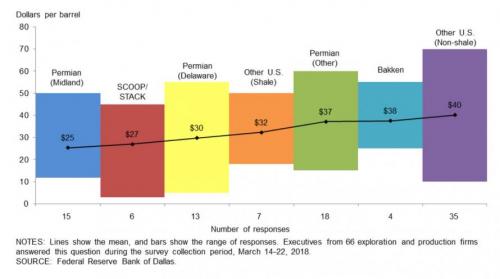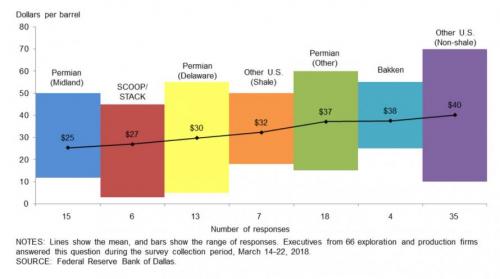Oilfield service providers are upping their prices, the latest Dallas Fed Energy Survey has found, confirming what producers began to complain about last year when oil prices started recovering.
The survey found the index of input costs for oilfield services jumped from 46.8 from 30.9 this quarter from last. The index for oilfield service prices was also higher in Q1 2018, at 27.9 from 22.6.
Further strengthening the view of an industry in recovery, the survey also found that the index for utilization of oilfield service equipment was higher this quarter, at 40.4. That’s up 11 points from the reading for the last quarter of 2018, the Dallas Fed noted.
Higher oilfield services prices began pressuring producers’ margins soon after the industry officially swung into recovery and growth mode. It was only to be expected because the services sector suffered a harder blow from the oil price collapse, with providers forced to offer huge discounts to drillers in order to stay in business.

Once prices began rising again, producers were eager to start pumping more again and not long after there was a shortage of frack crews and equipment on the horizon. This shortage led to a price spike for oilfield services and longer waiting periods. It also led to new optimism about the services industry.
This is only fair. After all, it was oilfield service providers that accounted for the bulk of the almost half a million layoffs in the industry during the downturn. It was oilfield service providers that greatly contributed to those notorious efficiency improvements that producers like to brag about so much. In the providers’ case, efficiencies meant cut-throat prices for their services.
The recovery is not universal, though, as Forbes’ Dan Eberhart noted in a recent story on the sector.
Smaller services providers—and even some big ones—are still in the red and struggling to return to profit. Consolidation is on the rise as is to be expected and, Eberhart argues, the current relationship between producers and service providers will need to change because in its current form it is unsustainable. Producers, in other words, might be in for a blow to their profit margins as service providers recover.














Leave A Comment